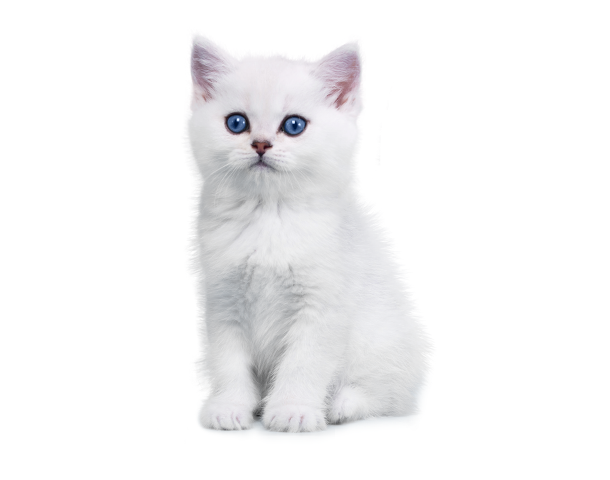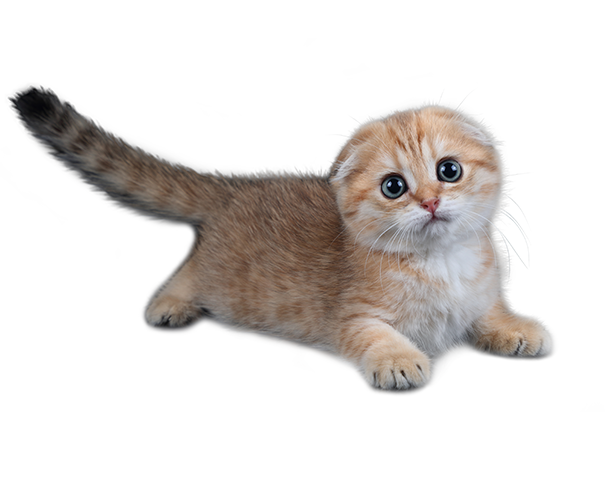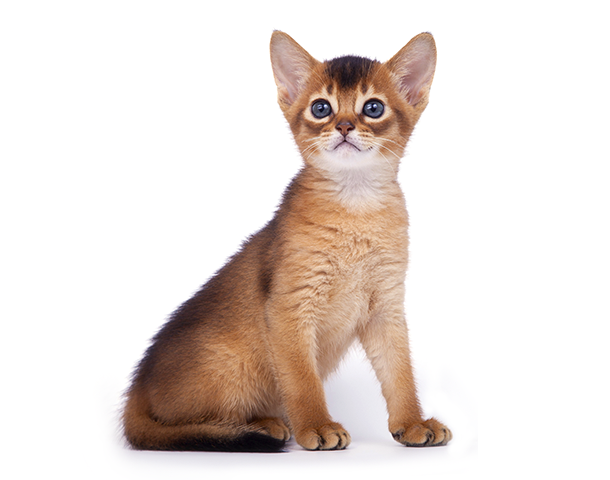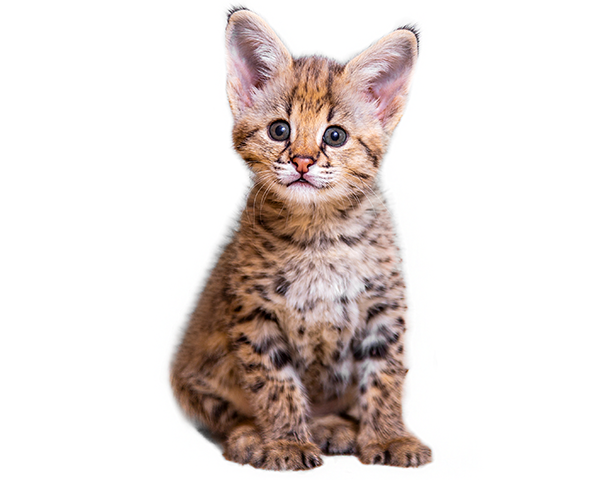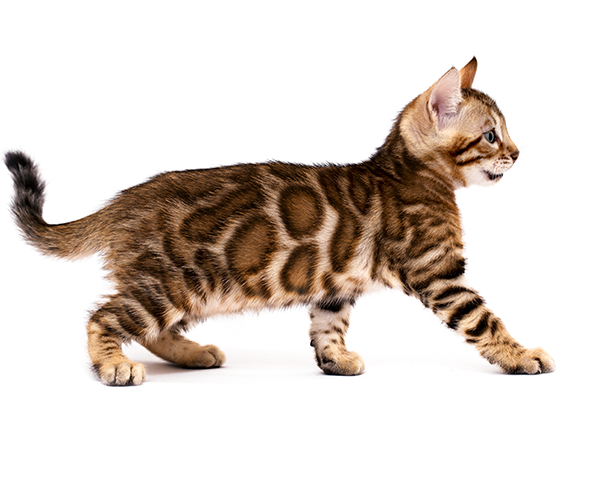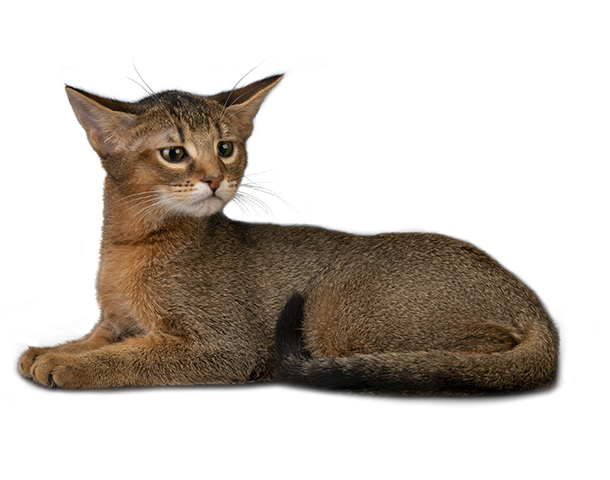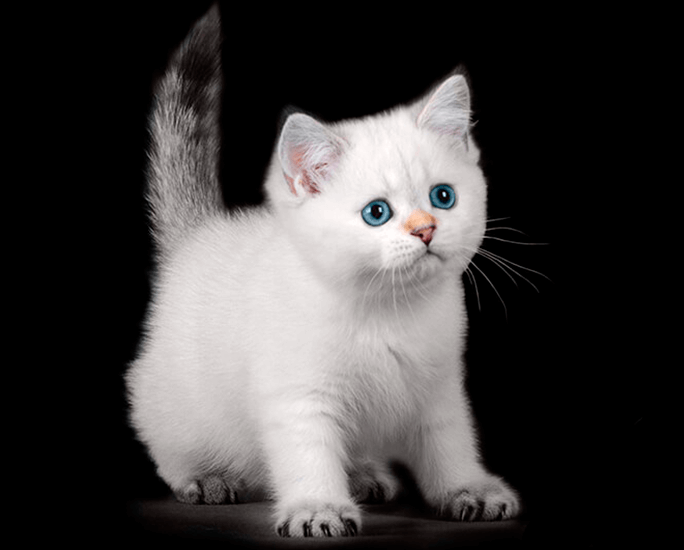Colors of Bengal cats
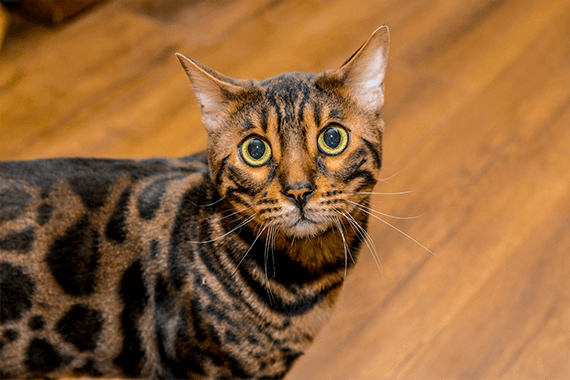
What do little leopards look like?
Drawings
Drawings on the body can be of 2 types: spotted and marble. There are also general requirements. Preference is given to more contrasting, with clear sharp outlines of spots and stains. The contrast is created by two, and sometimes three or more, which is preferable, colors and shades.
On a light background, large rosettes or lines of marble color are shaded by the third color from the main background, and the patterns are even more whimsical.
And nature applied «make-up» to the muzzle: clarified hair around the eyes, the so-called «glasses», ideally almost white whiskers and a chin, running from the nose along the cheeks 2-3 dark lines to match the pattern. The «M» on the forehead turns into an exquisite scarab hieroglyph, consisting of many graceful lines flowing from the back of the head to the neck. On the throat, solid or torn «necklaces» of spots. The lips, eyelids and nose are outlined in dark black or brown and the same paw pads in accordance with the main color of the coat. On the back of the ears in the center are lightened spots, «ocelot spots», like in wild cats.
The neck, chest, belly, and the inside of the paws are much paler than the hair on the sides and back. In this case, the stomach, legs and tail are covered with small round or elongated spots. Light and dark spots alternating along the length of the tail can be closed in rings and end with a necessarily dark tip, black or brown, depending on the color. Bengals with significant rufous coats (i.e., a bright apricot to reddish-brown background) may have spots or streaks of brown, but with black paw pads and the same tail tip. And only by these signs it is possible to accurately determine the true color of the cat.
These are common features that are characteristic of both types of drawing. What are the drawings themselves?
Recall that small wild leopards wear spotted fur coats. Small spots of a round or triangular shape are arranged randomly or in horizontal rows on the body. The same happens with domestic Bengals. This pattern is called spotted. But sometimes the skins of forest animals were painted with a more complex pattern, consisting of triangles, commas, curved stripes. By combining the genes of wild and domestic cats, with directed selection, unusually interesting variants are obtained, and then beautiful rosettes appear on the skins instead of simple spots. In principle, this is the same spotted, but some consider this type of pattern to be transitional from spotted to marbled.
Rosettes come in the form of rings and half rings, they can resemble a paw print, a dart tip or a bunch of grapes. Large individual round spots of a solid color are also called rosettes. Preference is given to patterns composed of the same type of spots, evenly spaced and isolated from each other. It is important that they do not merge into vertical «tiger» stripes. This is a disadvantage. Large outlets should also not flow into one another.
From the shoulders to the tail of the ridge, rows of round-shaped spots or in the form of curved stripes form.
The name of another marble pattern – marble, speaks for itself. Although theoretically it is the same classic or spotted, but mainly only the first term is used for Bengals. Curved, flowing horizontal lines, bizarre stains are very reminiscent of noble marble. But the beautiful round spots and concentric circles around them, which are found in other domestic cats and are found in the American “bull’s eye”, do not reach. As for the “tiger” stripes.
Bengal drawings are very exotic. And although some variants are found, albeit extremely rarely, in other breeds, but in studies with a pronounced undercoat, contrasting polychrome patterns give leopards a unique look.
Colors
Of all the variety of colors, nature has awarded little predators with only one: black spotted tabby. For camouflage in the environment. Depending on the habitat, the coat can have shades from sandy gray to dark chestnut. Hybridization, however, made adjustments to the genotype of the Bengal breed, and some of the resulting variants were fixed in the standards.
The TICA standard recognizes five colors. All of them are genetically black, but due to the high degree of rufous, the color of cats often looks like yellow-brown. Therefore, the colors were named: brown spotted / marble / tabby; silver spotted/marble/tabby; seal sepia spotted / marble / tabby; seal mink spotted / marble / tabby; seal spotted / marble/ lynx point. As you can see, both of the above types of patterns are allowed in all colors.
Also, some standards allow blue colors. Moreover, combinations of all 4 listed colors and 2 patterns with silver wool are possible.
Sometimes black (melanistic), chocolate, lilac and even tortoiseshell kittens were born. But these colors are not yet recognized by the leading felinological organizations, so these kittens should be culled when breeding. Still, the standards have already been adopted, and it is necessary to adhere to them.

